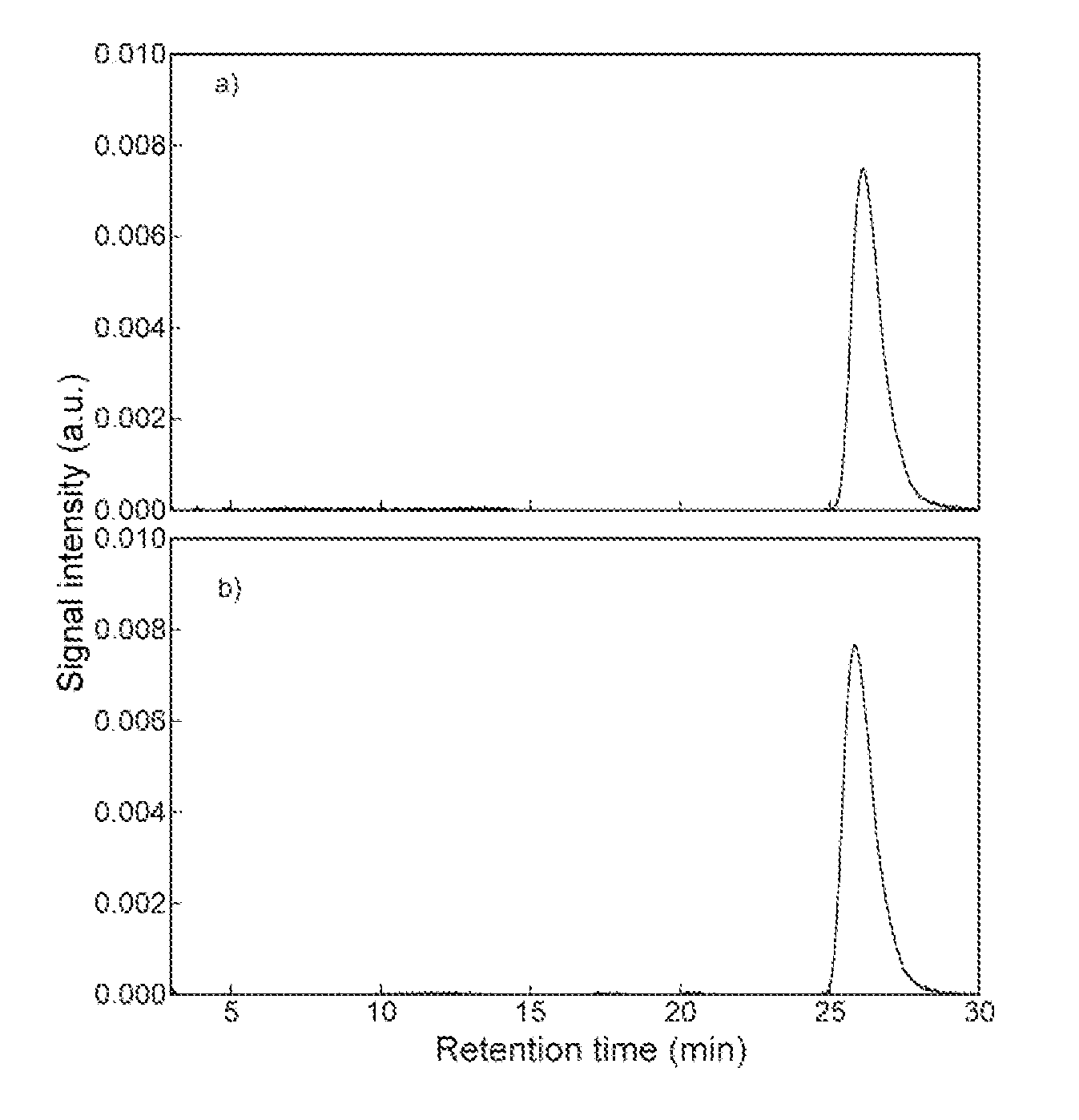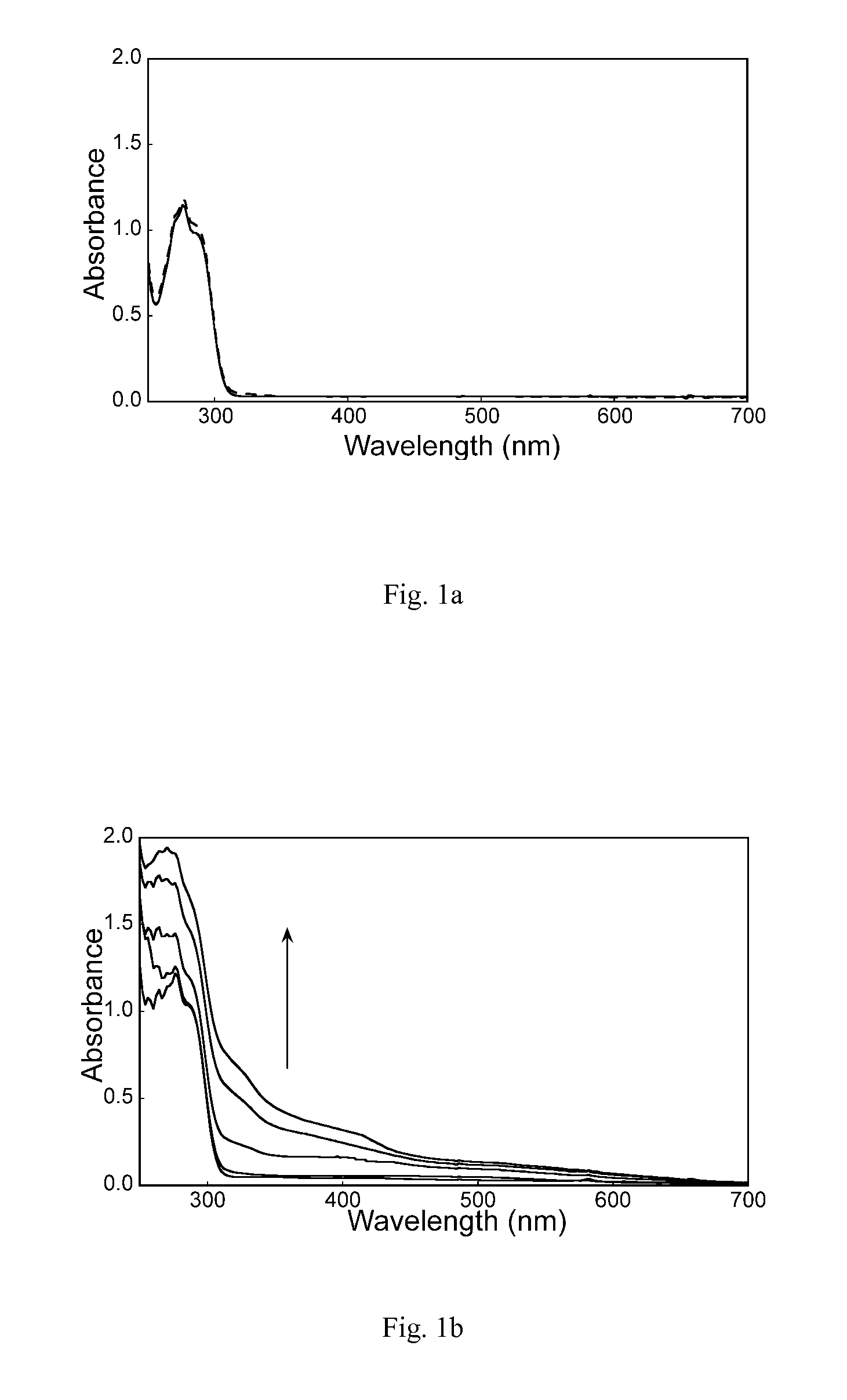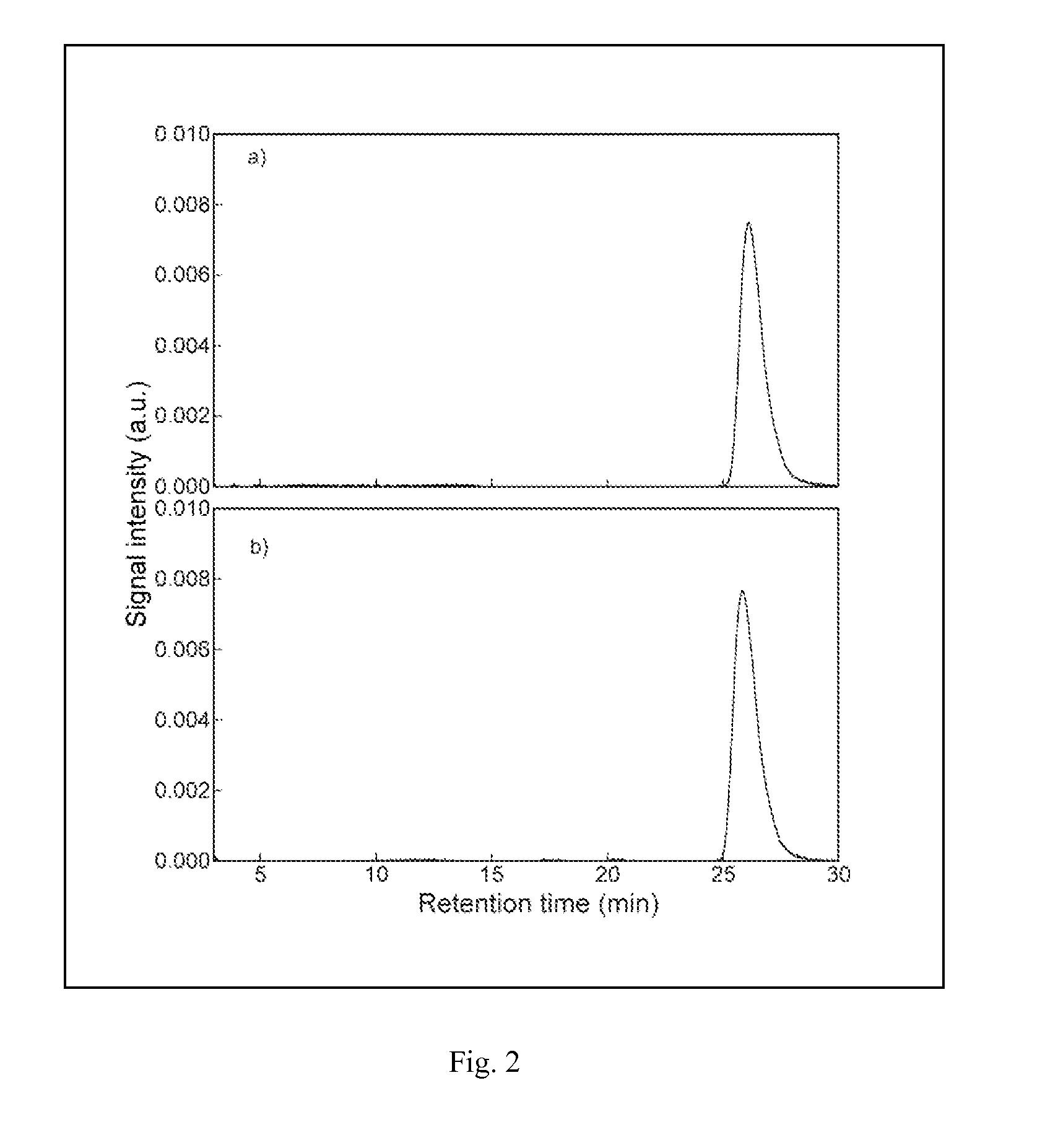Hybrid photocatalysts, the method of their synthesis and use
a photocatalyst and hybrid technology, applied in the field of hybrid photocatalysts, can solve the problems of limiting the growth of human civilization, negatively affecting longevity and quality of life, and increasing pollution of the natural environment of human beings
- Summary
- Abstract
- Description
- Claims
- Application Information
AI Technical Summary
Benefits of technology
Problems solved by technology
Method used
Image
Examples
example 1
[0047]Synthesis of an Aluminosilicate Photocatalyst Containing Porphyrin Chromophores (C30B-4CP)
[0048]The synthesis was performed in a three-necked flask under nitrogen. 50 mg of mezo-tetra(4-carboxyphenyl)porphine (4CP) was dissolved in 5 ml of dry DMSO, the catalysts, i.e. 120 μl of pyridine and 30 μl of isobutyl chloroformate, were added and after 5 minutes a suspension of 0.5 g Cloisite 30 B in 15 ml of dry DMSO was added. The reaction mixture was mixed at 70° C. for 4 hours. The product obtained was filtered on a Buchner funnel with a sintered glass disc and washed with methanol till the transparent filtrate was obtained and then the product was dried in a vacuum dryer. A green powder was obtained.
example 2
[0049]Studies on Aluminosilicate Photocatalyst Containing Porphyrin Chromophores
[0050]The possibility of the application of C30-4CP photocatalyst for photochemical removal of water pollutants which are derivatives of phenol. For studies on photocatalytic properties of C30B-4CP phenol was chosen as a model water pollutant. In a control experiment it was demonstrated that phenol irradiated with light of λ>380 nm (and therefore not absorbed by phenol) in the presence of C3OB which did not contain 4CP practically does not undergo photochemical reactions (FIG. 1a—UV spectra of phenol (cphenol=7.3×10−4 M) irradiated with light of λ>380 nm in the absence of C30B-4CP for 0 (solid line) and 240 min (dashed line)).
[0051]On the other hand, the spectra of phenol irradiated in the presence of C30B-4CP show noticeable change, i.e. increased absorption in the UV and visible spectral range. This increase is more pronounced in the short wavelength range. Changes of this type in phenol spectra are ch...
example 3
[0052]Synthesis of the Copolymer of Sodium Styrenesulphonate and 2-Vinylnaphthalene (SNp)
[0053]Poly(sodium styrenesuphonate-co-2-vinylnaphthalene) was obtained in the radical polymerization using 2,2′-azobis(isobutyronitrile) as an initiator. Polymerization was performed at 60° C. in DMSO degassed by a few freeze-pump-thaw cycles.
[0054]The polymerization was continued for 21 h and the polymer was precipitated with 1-butanol, filtered, washed thrice with diethyl ether and dried in a vacuum drier for 40° C.
[0055]The polymer obtained was dissolved in water and dialysed in deionized water using dialysis tubes with a cut-off value about 12-14 kDa and isolated through freeze-drying. The elemental analysis has indicated that the polymer obtained (Formula 3) contained 59 mol % of vinylnaphthalene and 41 mol % of sodium styrenesulphonate. In the case the polymer is obtained from monomers intercalated previously into the aluminosilicate layers the procedure described above is modified so that...
PUM
| Property | Measurement | Unit |
|---|---|---|
| Temperature | aaaaa | aaaaa |
| Molecular weight | aaaaa | aaaaa |
Abstract
Description
Claims
Application Information
 Login to View More
Login to View More - R&D
- Intellectual Property
- Life Sciences
- Materials
- Tech Scout
- Unparalleled Data Quality
- Higher Quality Content
- 60% Fewer Hallucinations
Browse by: Latest US Patents, China's latest patents, Technical Efficacy Thesaurus, Application Domain, Technology Topic, Popular Technical Reports.
© 2025 PatSnap. All rights reserved.Legal|Privacy policy|Modern Slavery Act Transparency Statement|Sitemap|About US| Contact US: help@patsnap.com



